
The feet and legs are some of the most neglected parts of our bodies. Many of us will spend hours on our hair and looks, but almost no time to care for our lower body, which is responsible for movement and carrying us from task to task.
Even bodybuilders, some of the most health-conscious people around, often remind each other not to skip “leg day” or joke about those who do. But why do so many of us neglect our legs and feet?
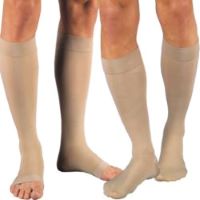
The answer might be that our legs and feet are far from our eyes, or that they’re covered by clothing for most of the day. Still, it’s essential to care for your legs and feet. Paying attention to your lower body makes it easier to observe changes in your health, and it can even decrease limb fatigue.
While both women and men tend to neglect their lower bodies, men report it more often than women.
And think about it, how often do you see the average male getting a pedicure or leg massage? But that doesn’t mean that men aren’t subject to health conditions that affect their legs and feet.
Let’s take a look at one of the most common conditions below.
Deep Vein Thrombosis
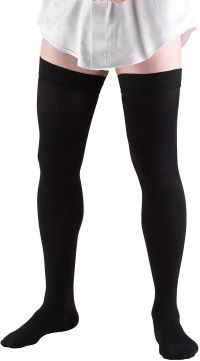
Deep vein thrombosis or DVT describes a blood clot (thrombosis) that forms in the deep veins of the arms or the legs.
When your blood moves slowly, it can cause a clump of blood cells called a clot. This is most likely to occur in the veins of the thighs or lower legs.
Arteries have a thin muscle lining surrounding them to help transport oxygenated blood to the rest of the body from the heart.
Veins are responsible for taking back blood to the heart and lungs for oxygenation. Unfortunately, veins do not have similar muscle lining on their walls.
They rely on physiology. Blood returns to the heart through the veins thanks to the body’s large muscles, which squeeze as they contract in their normal activity of moving the body.
Gravity and inactivity, however, often work against this process. Since the legs are furthest from the heart, blood travels more slowly through their veins. An upward flow is difficult to achieve, reducing the movement of blood and increasing the risk of DVT.
There are two main types of veins found in the legs: superficial veins and deep veins.
Superficial veins are found just below the skin, and you can see them on the surface. Deep veins are located within the muscles of the extremity. Blood flows from the superficial veins to the deep veins through smaller connector veins known as perforator veins.

Blood clots can occur in both the superficial veins and the deep veins. Clots in the superficial veins usually do not pose a health threat because the perforator vein valves act as a sieve, preventing clots from entering the deep venous system.

A blood clot in the deep veins, on the other hand, is potentially dangerous.
It becomes life-threatening when a piece of the blood clot breaks off and starts to travel through the bloodstream.

It travels through the circulatory system to the heart and enters into one of the pulmonary arteries, where it can become lodged. This prevents blood from flowing correctly through the lungs, which in turn decreases the amount of oxygen absorbed and distributed back to the body.
Thus, you have what’s known as a Pulmonary Embolism, or PE.
Symptoms
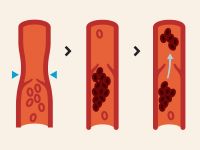
The most prevalent symptoms of DVT include pain and swelling in the affected areas.
The pain is sharp and the swelling occurs suddenly.

The pain may become more severe when you stand or walk. The affected area may turn red or bluish-purple, and it could feel warm or hot to touch. Your veins will likely be enlarged, twisted, and visible under the skin. You may also experience leg cramps starting at the calf.
Unfortunately, many men don’t realize that they have DVT until signs of Pulmonary Embolism begin to manifest. They include:
shortness of breath, especially when walking or running,
chest pain that gets worse when you take a breath,
a higher heart rate, and coughing up blood.
Causes of Deep Vein Thrombosis
Deep Vein Thrombosis is caused by many things, especially in men. The most common cause is age. As you grow older, your muscles begin to deteriorate and become weaker. This hinders the function of the veins making blood travel slower.
The risk of developing DVT in men increases as you age, especially if you’re over 40.
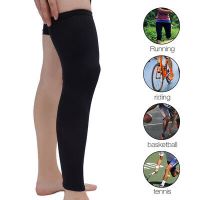
Another factor that causes deep vein thrombosis is standing for long periods.
Standing for an extended period puts you at risk of developing DVT because it causes varicose veins, a gateway to deep vein thrombosis. And sitting for long periods isn’t any better.

When you sit for a long time, the muscles in your lower legs stay relaxed. Because veins rely on muscle movement to pump blood back to the heart, it makes it hard for blood to circulate and move around as it should.
People who travel for a long time are often at risk of developing DVT due to this. If you are used to sitting in the office for long hours, then you are also at risk of developing DVT.

Obesity is another factor in the development of DVT.
Men who are overweight tend to have a less than active lifestyle, meaning that their muscles are not working. This inactivity slows down blood flow. Extra fat around the belly also prevents blood from moving quickly into the deep veins.
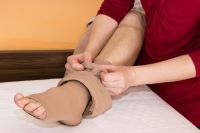
Obesity also alters the chemical makeup of the blood, leading to inflammation and a higher risk of developing clots.
Those who suffer from obesity are also at risk of developing diabetes, which will most likely lead to DVT.
DVT can also be caused by certain inherited blood disorders that affect platelets. Platelets are responsible for the clotting of blood.
One such disorder is thrombotic thrombocytopenic purpura. This condition causes small blood clots to form in blood vessels throughout the body. Thrombotic thrombocytopenic purpura uses up the platelets in the body, creating a low platelet count and putting you at risk of developing DVT.

Essential thrombocytosis, or primary thrombocythemia, may also put you at risk of developing deep vein thrombosis.

It’s a condition where the body produces too many platelets due to unknown causes.
Unfortunately, the platelets do not work as they should, which causes excessive clotting, bleeding, or both.
Compression Therapy For Deep Vein Thrombosis
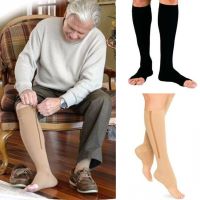
Compression therapy has been used to manage the symptoms of deep vein thrombosis for years. Though the gear can’t cure the condition, it does a fantastic job managing the symptoms and reducing the threat of pulmonary embolism.
Compression socks are like regular socks, except they offer a more snug and almost tight fit.
They’re made from elastic materials that stretch and compress, which helps increase the pressure of blood flow in the veins.
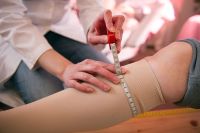
The pressure that compression socks apply on the legs reduces the diameter of the veins.
When this happens, the pressure of blood flow increases, which in turn improves circulation back to the heart. The improved circulation means that blood does not move slowly through the veins, offering fewer chances for blood clots to form.
Popular Articles on ComproGear
Best Compression Socks for Ankle Swelling Are Compression Socks Good for Swollen Feet?
Why Thigh-High Compression Socks?
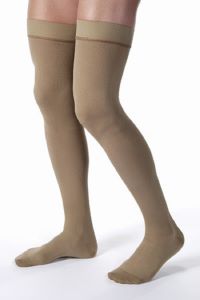
For most men, thigh-high compression socks or sleeves seem like a serious commitment.
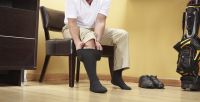
However, if you are at risk of DVT and other diseases, you should invest in a few pairs. They’ll help more than knee-high versions.
Thigh-high compression socks reach above the knee and cover most of the thigh. This length helps improve circulation for the whole leg, meaning that you will experience less swelling and pain.
If you have varicose veins or DVT in your legs, thigh-high compression socks should be the number one choice for you.
They manage the symptoms and appearance of these health issues, and if you catch it early, they can prevent the development of said conditions.
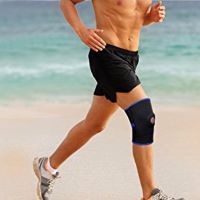
In general, thigh-high compression socks are more comfortable to wear than full-length hosiery, and they’re more practical.
You don’t have to take them off while going to the bathroom, and there’s no waistband cutting into your middle. They’re also discreet and can comfortably be worn under your regular clothes.

Thigh-high compression socks come in a variety of styles, including closed toe, open toe, and footless “sleeves.”
You’ll find them in neutral colors perfect for the office and bright patterns for those who like to stand out. Most brands also offer an array of fabrics or quality synthetic blends.
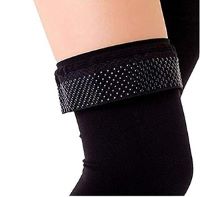
Wearing Thigh-High Compression Socks
You’ll need to be patient and precise the first couple of times that you put on thigh-high compression socks.
Try to put them on in the morning since your legs are prone to swelling during the day, and your legs are least swollen when you wake up.
If you move around before putting them on, you might want to elevate your legs for half an hour to reduce swelling.
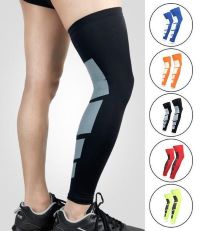
Put on your socks by rolling or bunching the fabric down to the heel before you insert your foot into the stocking. Then pull the stocking up slowly, unrolling it over your leg as you go.
When you have it on your whole leg, smooth and adjust it where necessary to straighten the seam. You want to eliminate all bunching and wrinkles, as they can cut off circulation.
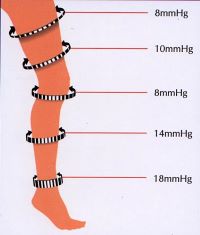
Some thigh-high compression socks require fitting by a specialist. However, many people buy their compression socks online or at vendors that don’t offer professional measuring. In this case, you’ll want to conduct the measurement yourself.
Start by measuring the ankle at the narrowest point, just above the ankle bone. Then, measure around the widest part of your calf.
The most critical measurement is around your thigh, taken 2-3 finger-widths from the crease of your buttocks.
Finally, measure the distance from the floor to the crease of your buttocks. These measurements ensure that you get the best fitting thigh-high compression socks in the pressure level that you desire.
